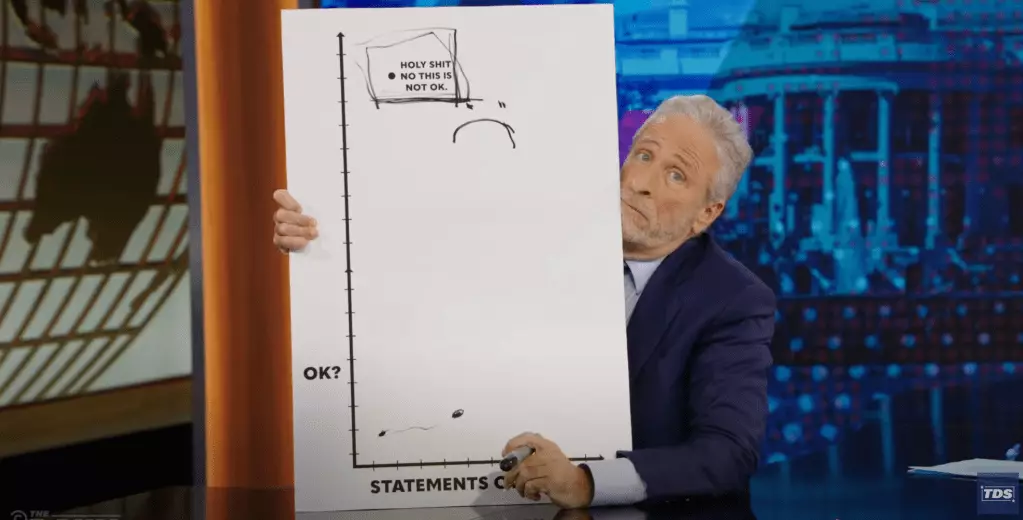In the vast, clamorous world of political discourse, Jon Stewart emerges as a beacon of analytical humor. His latest segment on The Daily Show presents a quirky yet profound tool to help viewers navigate the maelstrom of Donald Trump’s statements—a chart that seeks to classify the absurdity of the former president’s comments. By employing a humorous lens, Stewart cleverly sidesteps the emotional rollercoaster that often accompanies the examination of Trump’s actions. His chart, featuring an intersecting Y and X-axis mapping “OK?” against “statements over time”, becomes more than just a comedic gimmick; it represents a method to assess the relative gravity of political events that frequently border on surreal.
Stewart’s proclamation introduces a fresh framework for public discourse: an emotional barometer for dealing with outrageous political claims. With an astute nod to the format of ABC’s Shark Tank, he invites viewers to consider which statements deserve outrage and which should be met with bemusement. His assertion—that prioritizing outrage can lead to emotional fatigue—is perhaps one of the most powerful insights of the segment. In a time where many feel inadequately equipped to process the deluge of news, this chart symbolizes a call to arms for humor as a coping mechanism.
The Fine Line Between Cynicism and Outrage
However, what unfolds next in Stewart’s narrative is a revealing shift. Despite his initial aim to maintain composure, Stewart’s demeanor fluctuates as he encounters the sheer absurdity of Trump’s propositions—from wanting to resurrect Alcatraz as a functioning prison to generating AI imagery of himself as the Pope. Herein lies the catch: even the most seasoned satirist is not immune to the emotionally charged whirlpool that Trump’s rhetoric incites. Throughout the segment, Stewart’s struggle to maintain his own chart aligns closely with what many of us experience—a tug-of-war between laughter and frustration.
In dissecting Trump’s statements, Stewart underscores the absurd weight of the media’s responsibility to fact-check the “f—ing nonsense” that distracts from more pressing issues. The segment also illustrates a broader truth—just how much time and energy are expended on the flimsy fabrications that dominate political headlines. As Stewart’s frustration escalates, viewers are reminded that the absurdities of politics often lead to genuine emotional responses, challenging the notion that one can remain completely detached.
Brilliance Through Emotion: A Personal Reflection
Ultimately, Stewart’s journey through his cleverly structured chart unveils a deeper message: that it is perfectly acceptable to feel provoked by the absurdities in modern politics. His evolution from poised presenter to an exasperated commentator humanizes the political strife that many face today. It prompts a reflection on the necessity of emotional engagement in political discourse—despite the chaotic circumstances.
In showcasing his vulnerability, Stewart inadvertently implores us to embrace our emotional responses while navigating the absurdities of contemporary politics. Far from simply mapping outrage, his chart serves as a reminder that humor, while an effective tool for distance, is also a powerful vehicle for engagement. It essentially brings us back to the heart of political dialogue, where laughter and frustration can coexist, fostering a more informed and emotionally resilient populace.
